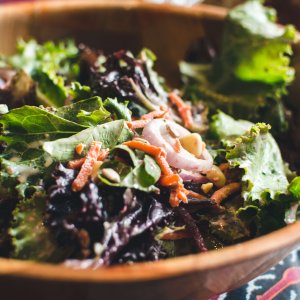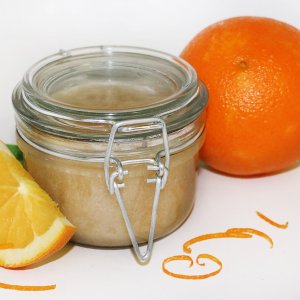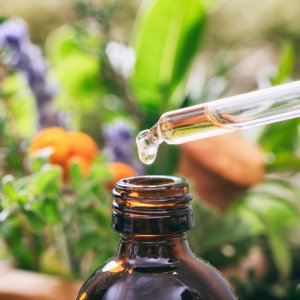Drug interactions occur when a combination of medications produce a clinically significant change in pharmacologic response that is larger or smaller than the sum of effects when the drugs are administered separately. The variation relates to pharmacokinetics, which is the study of how much and how fast the body absorbs, distributes, metabolizes, and eliminates a foreign substance.
All manner of foreign substances, including essential oils, interact with the body. This leads to questions about whether people taking certain medications with certain disease states or with a history of disease should avoid using certain essential oils. As always, it is advised to consult a healthcare professional knowledgeable about essential oils before embarking on any new routine.
Drug Metabolizing Enzymes and the Liver
Many drug interactions arise from the liver. This is because the liver is the most active metabolizing organ in the body, equipped with a plethora of drug metabolizing enzymes that break down medications and foreign substances into excretable metabolites. Liver enzymes include cytochromes, CYPs (pronounced ‘sips’), and P450. Furthermore, enzymes may have more specific names (e.g. CYP3A4, 1A2, 2C9, etc.). CYP function varies based on age, race, and individual genetics.
Metabolism
Metabolism consists of three phases: phase 1, 2, and 3.
Phase 1 Metabolism
Phase 1 metabolism involves basic chemistry: oxidation, reduction, and hydrolysis. There are 2 basic types of reactions in phase 1 metabolism:
- Enzyme-dependent, such as those occurring in the liver via monooxygenase activity.
- Byproduct of pH changes, such as those occurring in the stomach.
Byproducts of phase 1 metabolism may not be immediately excretable and may undergo further transformation in phase 2. Additionally, phase 1 metabolism can activate substances (such as prodrugs to active drugs) or toxify substances (when non-toxic starting materials become toxic).

Phase 2 Metabolism
Phase 2 metabolism uses an enzyme to add a functional group to a molecule. This ensures the group is water soluble and highly excretable. Enzyme-dependent functional groups that serve this function include sulfate, methyl, acetyl, glucuronide, glutathione, and glycine.
During conjugation to one of these groups, most products are rendered water soluble and not available for further use by the body. However, some products may proceed even further to phase 3 reactions. These reactions may take place in the liver, as well as the kidneys, lungs, central nervous system, intestine, prostate, red blood cells, and more.
Phase 3 Metabolism
Phase 3 takes the conjugation products from phase 2 reactions, removes the added group, and finally, acetylates them to prepare them for excretion.
Many of these metabolic processes are dependent on enzyme activity, and many foods and medications can alter enzyme function. When an enzyme becomes inhibited, metabolism of any substrate of the enzyme will decrease (meaning the medication or foreign substance will stay in the body longer). If we induce the enzyme, metabolism of the substrate will accelerate (meaning the medication or foreign substance does not stay in the body as long).
Examples of medications that can induce CYP enzymes include rifampin and carbamazepine. Medications that can inhibit include cimetidine, omeprazole, ritonavir, and many more.
Essential Oil Drug Interactions
Wild mountain sage, brown and yellow camphor, lemongrass, blue chamomile, blue tansy, and yarrow essential oils have been shown in vitro to interact with cytochromes. These essential oils may also interact with medications metabolized by these enzymes. Additional in vitro studies demonstrate hundreds of essential oil constituents that may interact with enzymes. The individual constituents are simply too numerous to name here.
For information about grapefruit essential oil and enzyme inhibition, check out this post.
Other Drug Interactions

P-Glycoprotein
Efflux pumps, such as P-glycoprotein in the liver, jejunum, colon, pancreas, and kidneys, effectively remove foreign substances from cells. Medications, such as proton pump inhibitors, calcium channel blockers, and certain antidepressants, can inhibit P-glycoprotein, thereby increasing the duration of time a substrate will stay in the body.
The extent to which essential oils can affect drug transport is unclear, however the effect is likely small.
Plasma-Binding Proteins
Many medications are carried in the blood with plasma-binding proteins (PBPs). Additionally, certain essential oil constituents, such as b-elemene, bergapten, and limonene, have been shown to bind to plasma proteins. This could lead to a potential displacement of medication from PBPs, making it available both for pharmacologic action and metabolism and excretion.

At the cellular level, foreign substances compete with endogenous substances for binding sites on the cell. The essential oil constituent (E)-anethole is structurally similar to catecholamines, such as dopamine, epinephrine and norepinephrine. Therefore, it may compete with these substances for binding sites on cell surfaces.
Lastly, some foreign substances change the potency of medicines by interacting with their targets. For example, many substances containing high levels of methyl salicylate may potentiate the action of blood thinners because methyl salicylate directly inhibits platelet function and exacerbates blood thinning.
MAO
Monoamine oxidase (MAO) is an enzyme that breaks down neurotransmitters. Certain anti-depressant medicines and anti-Parkinson medicines inhibit this enzyme as a part of their therapeutic action. Because of numerous side effects, these medications are generally not first-line agents.
Nevertheless, essential oils containing eugenol, such as clove, or myristicin, such as nutmeg, may potentially inhibit MAO in rat brains. If you are taking the abovementioned medications, avoiding overuse of essential oils high in eugenol or myristicin may be prudent.
G6PD
While not a drug interaction, genetic differences in enzyme function, such as glucose-6-phosphate dehydrogenase, may impact the use of essential oils, especially in male children of Chinese, West African, Mediterranean, and Middle Eastern descent.
There are more than 140 ways genes encode G6PD, and each leads to variations in how the enzyme functions. Drug interactions in patients lacking the G6PD enzyme may result in hemolysis.
Children with G6PD deficiency may be slow to metabolize menthol. Thus, avoiding the overuse of essential oils high in menthol, such as peppermint, may be prudent for people who lack the enzyme.
Want to learn more science about specific drug interactions, check out my book Essentials: 75 Answers to Common Questions About Essential Oils and Supplements.
For even more education about natural health and wellness, come !












